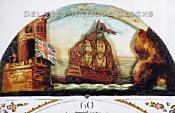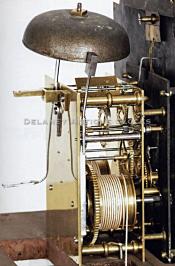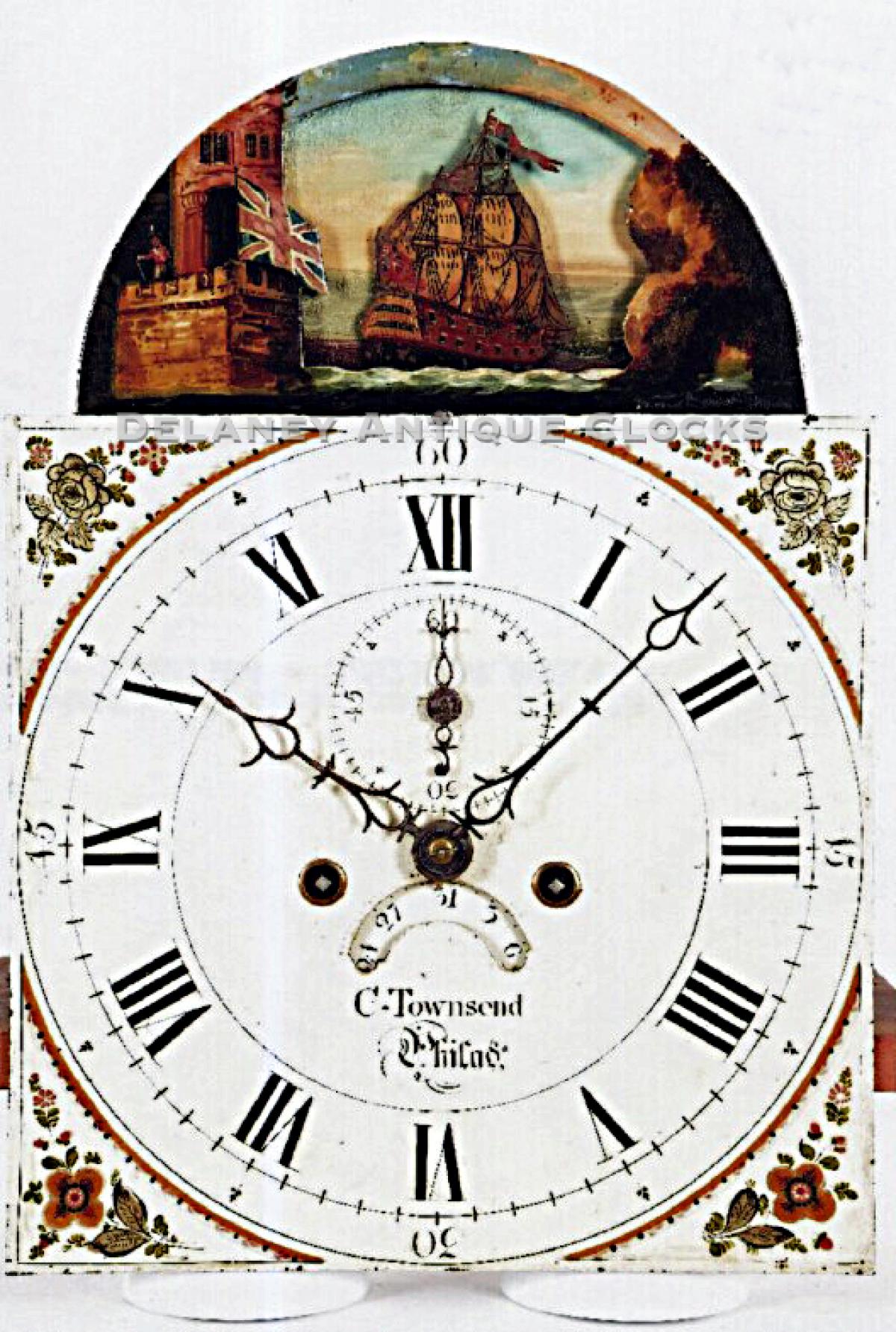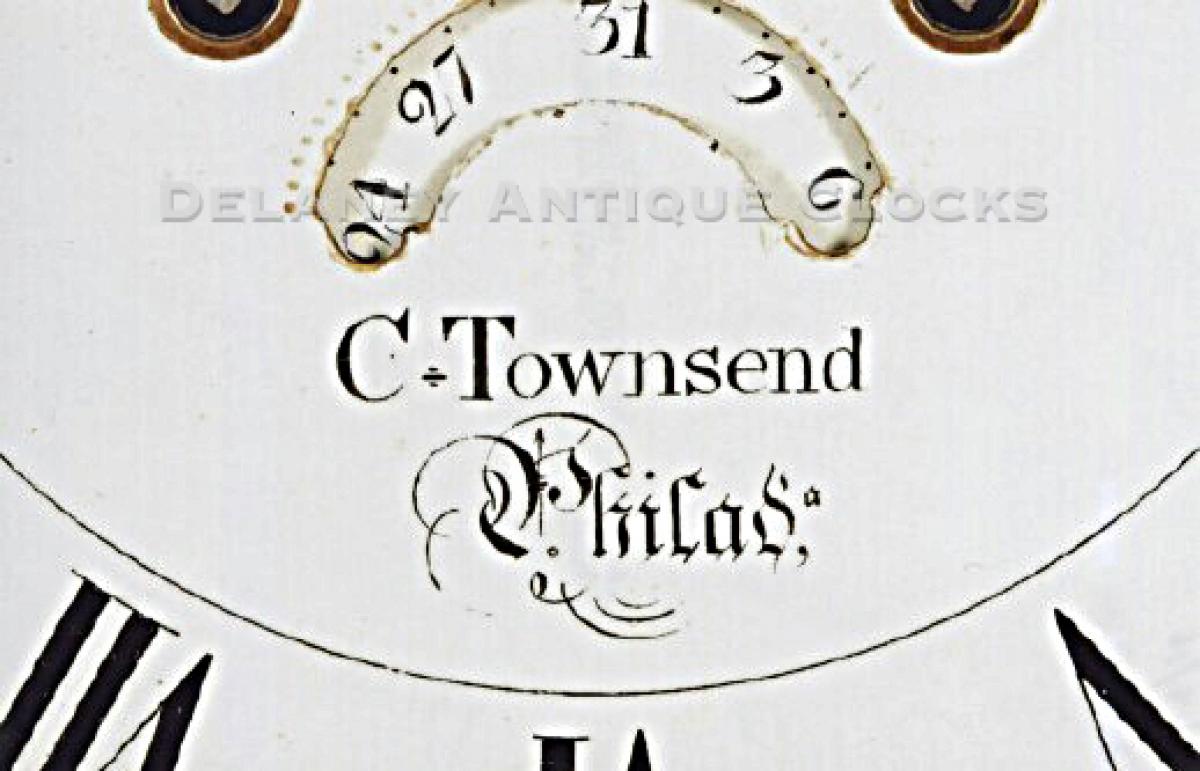Charles Townsend of Philadelphia, Pennsylvania. Rocking ship automated dial. Long case clock.
This attractive mahogany and mahogany veneered case exhibits very good-figured wood selections in the waist door and base panel. The finish has been recently restored to capture the beauty of the grain in the wood. The color is rich, warm, and inviting. This case stands on four turned and shaped feet that are applied to the bottom of the base. The feet and the base are separated by a simple half-round molding that transitions to a step. The front panel is trimmed with a cross-banded border. A delicate applied molding frames a veneered panel. This panel features a richly-grained crotch selection of veneer. The waist section is long. It is fitted with a door. This waist door is trimmed with a molded edge. The panel also features a crotch selection of veneer that is excellent. Through this door, one can access the weights and pendulum. The sides of the case are fitted with quarter columns. These are fluted and turned wooden capitals positioned at the ends. The bonnet is designed with a swan's neck pediment. The tall arches are nice and thin. They help center a single-turned wooden finial in the form of an urn. Fully turned and shaped bonnet columns flank the arched glazed door, which opens to a colorfully painted iron dial.
This painted dial has the traditional displays of hours, minutes, seconds, and calendar date. This dial features automation in the arch in the form of a rocking ship. The man-of war- frigate flying the red ensign is sailing through the narrows. A guarded fortress protects the left side of the outlet. The fort is proudly flying the Union Jack. The frigate will move in a side-to-side motion with the action of the pendulum. Dials like this are referred to as rocking ship dials. This type of automation was popular as a result of the Napoleonic wars. The four spandrel areas are decorated with colorful florals. The Maker's name and working location, "Philad.a" are easily viewed and signed in block lettering. This dial is in excellent original condition. It retains a Felton Birmingham false plate. Felton was the dial maker.
This fine movement is constructed in brass and is of good quality. Four-turned pillars support the two brass plates. Hardened steel shafts support the polished steel pinions and brass gearing. The winding drums are grooved. The escapement is designed as a recoil format. The movement is weight driven and designed to run for eight days on a full wind. It is a two-train or a time-and-strike design having a rack and snail striking system. As a result, it will strike each hour on the hour. This is done on a cast iron bell which is mounted above the movement.
This fine example is nicely proportioned and stands approximately 7 feet 8 inches or 92 inches tall to the top of the center finial. When measured at the upper hood molding, this clock is 19.25 inches wide and 10.25 inches deep. It was made circa 1835.
Inventory number 216050.
Charles Townsend is a listed clockmaker in several horological references. He had a long career as a clock and watchmaker. The first record of him in Philadelphia is in 1799. He had a shop that was located on Front Street and stayed at this location until 1804. In 1804, he was also listed at 105 Chestnut Street. This double listing continues through 1808. This double entry might suggest that his shop and residence were separate at this time. After 1808, he is listed only at the 105 Chestnut street address until 1833. Townsend then moved to 21 Walnut Street in 1835, 10th Street during the period 1837 through 1842, and lastly, 49 South 10th Street from 1843 through 1849. He had at least one son, Charles Jr., who was also a clock and watchmaker.


















